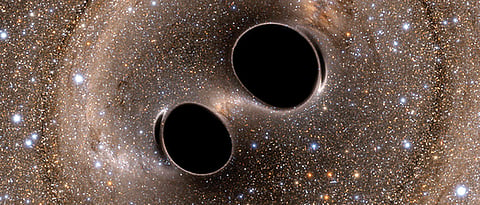

Pune: For the first time in human history, the researchers were able to observe the merger of a black hole. Interestingly, both these black holes were of unequal mass and thus, have opened new research avenues before the researchers.
The event dubbed as GW190412 was observed with both LIGO detectors (at Hanford, Washington and in Livingston, Louisiana USA) as well as the Virgo detector (located in Cascina, Italy). The unequal masses of GW190412 enabled researchers to verify a fundamental prediction of Albert Einstein’s general relativity that gravitational waves include more than one harmonic of the orbital frequency.
“On April 12, 2019, just after 11 am (Indian Standard Time), the LIGO Scientific Collaboration and Virgo Collaboration observed gravitational waves produced by the inspiral and merger of two black holes,” said the researchers at Inter-University Centre for Astronomy and Astrophysics (IUCAA).
The Indian team in LIGO including scientists from CMI Chennai, DCSEM Mumbai, ICTS-TIFR Bangalore, IISER Kolkata, IISER Pune, IIT Bombay, IIT Gandhinagar, IIT Hyderabad, IIT Madras, IPR Gandhinagar, IUCAA Pune, RRCAT Indore and TIFR Mumbai participated in the analysis and made vital contributions to this discovery.
According to the researchers, the masses of the two black holes are unequal. One black hole in the system is more than three times heavier than the other. This asymmetry in masses can help in measuring the distance to the source, and inclination of the system and the speed of rotation (spin) of the heavier black hole, etc.
The larger black hole was found to be spinning at about 40 per cent of the maximal spin allowed by general relativity. Also, GW190412 has occurred almost 2.5 billion light-years away from Earth!
“It also underlined that the black hole systems with unequal masses are relatively common and that we should expect to observe many more such systems in future,” they opined.
The detection gives scientists a better understanding of how black holes pair up. “We are learning that systems of this kind exist and how rare they are,” Giancarlo Cella, researcher at Istituto Nazionale di Fisica Nucleare in Italy and the data analysis coordinator for LIGO’s European counterpart Virgo, said in a statement.
(Agency inputs)
